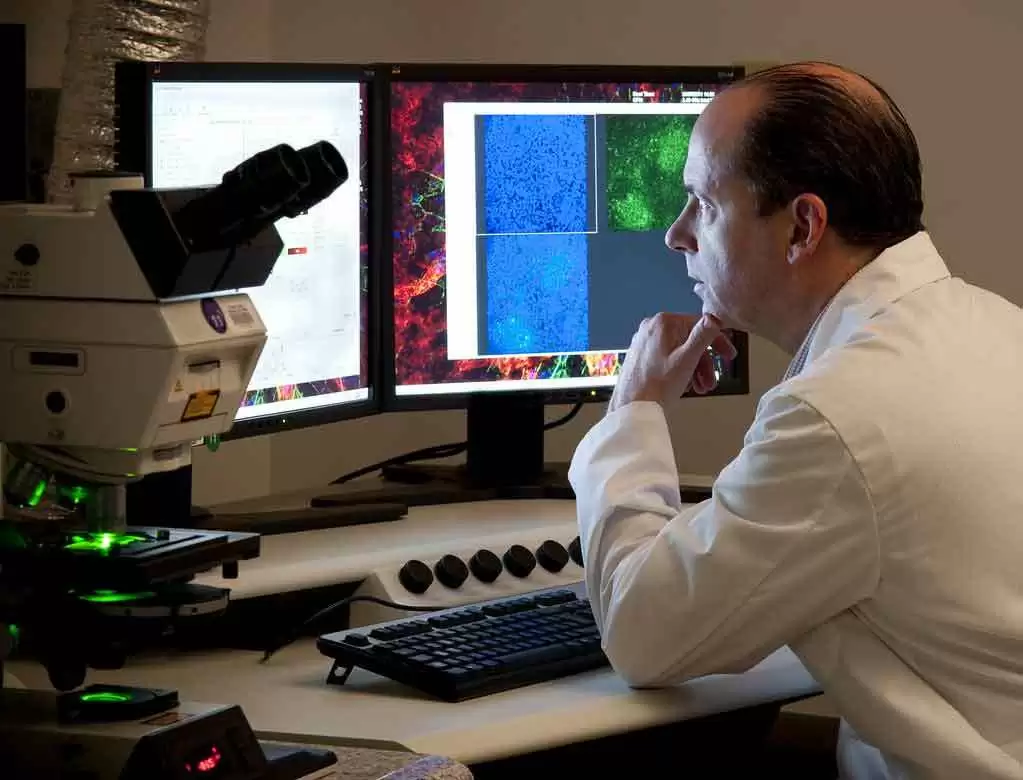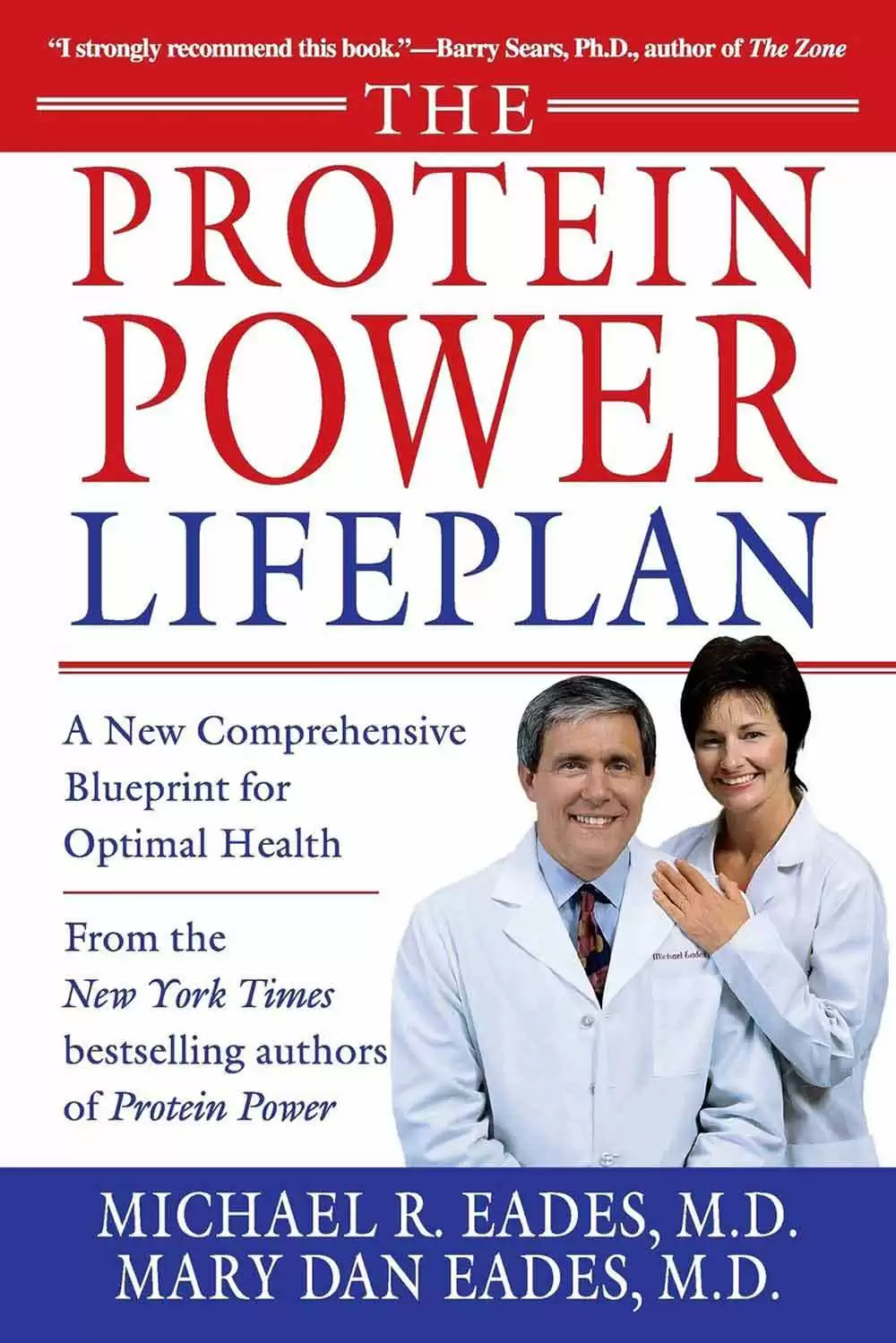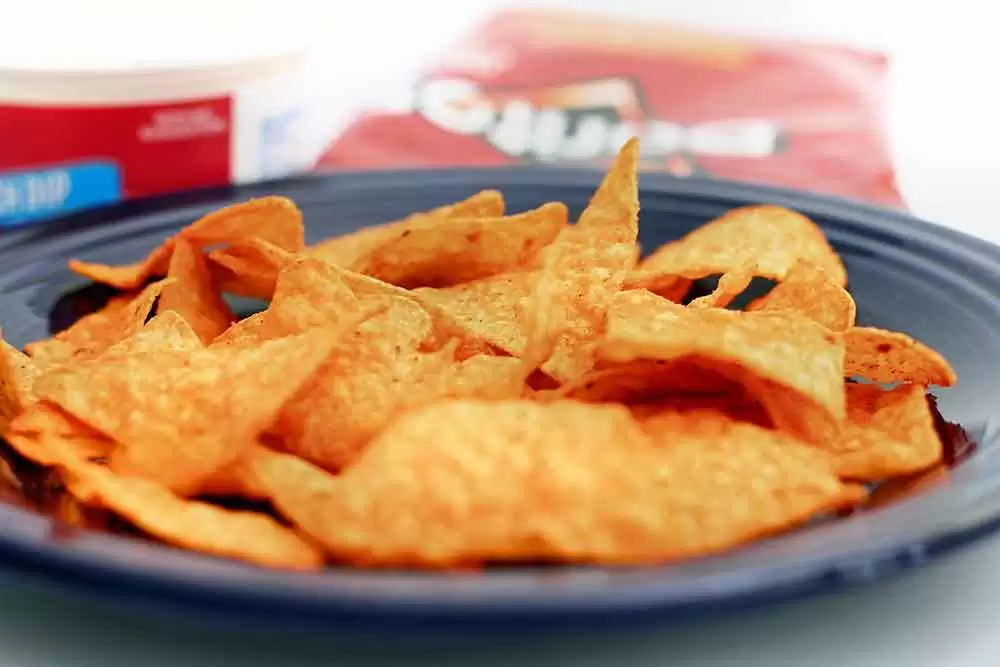-
Welcome to Celiac.com!
You have found your celiac tribe! Join us and ask questions in our forum, share your story, and connect with others.
-
Celiac.com Sponsor (A1):
Celiac.com Sponsor (A1-M):
-
Get Celiac.com Updates:Support Celiac.com!
Search the Community
Showing results for tags 'health'.
-

Study Looks at Health Disparities and Autism
Jefferson Adams posted an article in Autism and Celiac Disease
Celiac.com 11/08/2023 - Autistic adults often face more significant health challenges than their non-autistic counterparts, as revealed by numerous epidemiological studies. Although this issue has been explored, research has mainly been confined to specific geographical areas and has centered on young autistic individuals aged 35 and under. Recent research points to a higher mortality rate in autistic people and less satisfactory self-reported healthcare experiences. A team of researchers recently set out to examine increased rates of chronic physical health conditions in autistic adolescents and adults. The research team included John H. Ward, Elizabeth Weir, Carrie Allison & Simon Baron-Cohen. They are variously affiliated with the Royal Devon University NHS Foundation Trust, Exeter, Devon, UK; the University of Exeter Medical School, Devon, UK; the University of Oxford, Department of Psychiatry, Oxford, UK; the Oxford Health NHS Foundation Trust, Oxford, UK; and the Autism Research Centre, Department of Psychiatry, University of Cambridge, Douglas House, Cambridge, UK. Do Autistic Individuals Experience Higher Levels of Non-communicable Health Conditions? The team's study aimed to answer two fundamental questions: Do autistic individuals experience higher levels of non-communicable health conditions, and if so, can these disparities be attributed to differences in demographics, lifestyle factors, and family medical history? The researchers conducted a cross-sectional, convenience-sampling study through an anonymous online survey, which included over 2300 participants comprising both autistic and non-autistic adults, with roughly half being autistic. The survey collected self-reported data on demographics, autism diagnosis, lifestyle factors (like diet, exercise, sleep, substance use), personal medical history, and family medical history (for all first-degree, biological relatives). They used binomial logistic regression models of increasing complexity and employed the Benjamini–Hochberg correction to mitigate multiple testing effects. The study analyzed physical health conditions, considering only those with at least 1% endorsement within the sample to reduce the risk of Type I errors. Additionally, they used network analysis methods to explore the presence of multiple health conditions (multi-morbidity) in both autistic and non-autistic individuals. The study uncovered significantly higher rates of non-communicable health conditions across various organ systems in autistic individuals. These systems included the gastrointestinal, neurological, endocrine, visual, ear/nose/throat, skin, liver and kidney, and hematological systems. This study confirmed previous findings of notable differences in neurological and gastrointestinal symptoms between autistic and non-autistic individuals. The study also found a higher prevalence of celiac disease among autistic individuals compared to non-autistic individuals after controlling for sex, ethnicity, country of residence, alcohol use, smoking, and BMI, however, these results became non-significant after accounting for family history. Furthermore, this study, the largest to date, identified a higher likelihood of Ehler-Danlos Syndrome (EDS) in autistic females, compared to their non-autistic counterparts. Notably, the research also revealed higher rates of celiac disease among autistic individuals, even after considering demographic factors such as sex, ethnicity, and country of residence. However, this difference became statistically insignificant when accounting for family history. In essence, the study underscores that autistic adults face disparities in non-communicable health conditions compared to their non-autistic peers. The findings demonstrate the need for tailored healthcare and interventions to address these disparities and improve the overall health and well-being of autistic individuals. Read more in Molecular Autism volume 14, Article number: 35 (2023 -
Celiac.com 06/01/2023 - The rising popularity of gluten-free diets has captured public attention in recent years. With claims of weight loss, improved digestion, and increased energy, many individuals have jumped on the gluten-free bandwagon. However, it's important to base dietary decisions on scientific evidence, rather than mere trends. To shed some scientific light on the subject, a team of researchers conducted a controlled study to investigate the effects of gluten intake on body weight, body composition, resting energy expenditure, and the changes in nutrient intake caused by gluten-free diets. Study on Effects of Gluten Intake The research team included Hirla Karen Fialho Henriques, Luana Moreira Fonseca, Karine Silva de Andrade, Nitin Shivappa, James R. Hébert, Adaliene Versiani Matos Ferreira & Jacqueline Isaura Alvarez Leite. They are variously affiliated with the Department of Biochemistry and Immunology - ICB, Federal University of Minas Gerais, Belo Horizonte, Brazil; the Department of Nutrition, School of Nursing, Federal University of Minas Gerais, Belo Horizonte, Brazil; the Department of Biochemistry and Immunology - ICB, Federal University of Minas Gerais, Belo Horizonte, Brazil; and the Cancer Prevention and Control Program, University of South Carolina, Columbia, South Carolina, USA. Their study enrolled twenty-three women, who adhered to a gluten-free diet for a duration of six weeks. During this period, the participants were provided with muffins containing either 20 grams of gluten isolate (known as the gluten period) or gluten-free muffins (the gluten-free period) in a crossover, single-blind, non-randomized trial. The researchers assessed the subjects' habitual diet, including gastrointestinal symptoms, food frequency questionnaires, body composition, resting energy expenditure, and recorded daily food intake for the entire six-week duration. The Findings - Increase in Fat and Sodium Intake Surprisingly, the data showed that body weight, body composition, gastrointestinal symptoms, and resting energy expenditure remained similar during both the gluten and gluten-free periods. These results indicate that consuming up to 20 grams of gluten per day does not affect body weight or composition in healthy women without caloric restriction, at least over a relatively short period of three weeks. However, the team saw some concerning changes when the nutrient composition of the gluten-free period was compared to the participants' habitual diet. The gluten-free diet led to an increase in fat and sodium intake, while reducing the intake of fiber, as well as vitamins B1, B6, B12, and folate. This imbalance in nutrient intake resulted in an elevated dietary inflammatory index, indicating a higher inflammatory potential associated with gluten-free diets. These findings highlight the importance of considering the overall nutritional quality of a diet, rather than focusing solely on the absence of gluten. While a gluten-free diet may be necessary for individuals with specific medical conditions, such as celiac disease, the results suggest that adopting a gluten-free diet without medical necessity may have adverse effects on nutrient intake and potentially contribute to inflammation. The study offers some potentially valuable insights into the impact of gluten intake and gluten-free diets on health, especially with regards to nutrient intake, but it's important to note that it has certain limitations. The small sample size and the short duration of the trial invite further research with larger populations and longer intervention periods, to validate and expand upon these findings. Additionally, the study focused solely on healthy women, so the results may not be generalizable to other populations, or those with specific health conditions. It's also important to note that following a gluten-free diet can lead to imbalances in nutrient intake, particularly a reduction in fiber and essential vitamins, and an increase in dietary inflammation potential, even in non-celiacs. As with any dietary decision, it's best to consult with a healthcare professional or registered dietitian to ensure a well-rounded and nutritionally adequate diet that suits individual needs. Read more in the J Am Nutr Assoc. 2022 Nov-Dec;41(8):771-779.
- 5 comments
-
Celiac.com 05/22/2023 - Gluten-free products have become more than just a lifeline for individuals allergic to gluten. They have emerged as a popular choice for a broader spectrum of consumers seeking specific lifestyle changes. One company that has witnessed this shift firsthand is Abe's Vegan Muffins, based in West Nyack, N.Y. Their gluten-free offerings have become intertwined with the plant-based trend and the paleo lifestyle market, reflecting the evolving demands of health-conscious individuals. As a result, Abe's Vegan Muffins anticipates significant growth in the gluten-free sector, potentially necessitating an expansion of their gluten-free product line. Known for its vegan treats, Abe's Vegan Muffins has successfully incorporated gluten-free options into its repertoire. Their gluten-free coffee cake and double chocolate muffins, made with brown rice flour, have emerged as best sellers. Kalyna DeAngelo, the social media and marketing coordinator at Abe's Vegan Muffins, acknowledges the impact of health and wellness on the bakery industry. For many people, gluten has been linked to various health conditions, prompting an increasing number of individuals to make the switch to gluten-free alternatives. What was once an exception has become the norm. As bakers delve deeper into the gluten-free realm, a wider array of exceptional gluten-free products is readily available. Dawn Foods, headquartered in Jackson, Mich., is another company witnessing the transformation of gluten-free from a passing fad to an enduring dietary preference. Consumers today seek a diverse range of lifestyle choices and diets, according to Melissa Trimmer, a certified executive pastry chef, culinary innovation operations and menu consultant at Dawn Foods Global. Kalyna and Melissa look for products in these categories to cater to a broader range of dietary needs without compromising on taste or texture. Gluten-free baked goods and mixes must now excel in flavor and performance, matching the quality of their non-gluten-free counterparts. Dawn Foods has stepped up to the challenge by offering a gluten-free line that includes crème cakes and high-ratio cakes in chocolate and vanilla. These products can be seamlessly substituted into various cake recipes, ensuring gluten-free options that are not just "good for gluten-free," but also irresistibly delicious and high quality. Gluten-free White and Dark Devil's Food cake bases are among Dawn Foods' top-selling gluten-free supermarket products, highlighting the company's success in the cake category. Moreover, Dawn Foods provides an extensive range of gluten-free selections worldwide, encompassing cake, crème cake, brownie, cookie, and cake bases. As the correlation between gluten-free diets and other health trends becomes increasingly apparent, companies like Abe's Vegan Muffins and Dawn Foods are at the forefront of meeting evolving consumer demands. The gluten-free landscape is no longer a niche market, but a thriving sector offering tantalizing options that cater to a variety of dietary preferences, without compromising on taste, texture, or quality. With the ongoing advancement in product formulation, and a deeper understanding of gluten-free ingredients, the future looks to hold some exciting possibilities for the gluten-free baking. Stay tuned for more about developments in gluten-free food, and related stories. Read more at Supermarketperimeter.com
- 3 comments
-
- foods
- gluten-free
- (and 5 more)
-
Celiac.com 11/03/2022 - Fair warning, this article talks freely about poop, poop storage, and poop replacement. Basically, this article is all about poop, and the role it might plays in your future good health, so if that's an issue, now is a good time to tune out, or in if you want to learn more. The crucial role of the gut microbiome in maintaining human health is just beginning to be understood. Many different cultures, and more than a few scientists, talk of a gut/brain connection. And healthy poop plays a major role in a healthy gut. We know that patients with C-diff and other gut maladies can benefit from fecal transplants from people with healthy guts. It's done via a medical procedure called fecal microbiota transplantation, or FMT. Some research shows FMT may help treat inflammatory bowel diseases, such as Crohn’s or ulcerative colitis. Studies in animals indicate that FMT may help treat obesity, lengthen lifespan, and reverse some effects of aging, such as age-related decline in brain function. Other clinical trials are assessing its potential for treating cancer. Now scientists are taking a serious look at the idea that banking fecal samples when we're young, and implanting them in our colons later in life, might help reverse damage, and restore gut health. The science behind this is not robust at the moment. It is mainly anecdotal and relies, in part, on extrapolating benefits from existing fecal transplants and extending those to regular people as a way to treat potential conditions later in life. Even so, a number of researchers are taking the lead and encouraging existing stool banks to permit regular folks to bank their poop now, so they can use it in the future when there is more science done to support the concept. That means the researchers feel strongly that future research, data and clinical experience will back them up and confirm their bet. Believe it or not, poop banks are already a thing. Just like sperm banks or blood banks, or any number of other banks for health-related specimens, stool banks exist for treating some of the conditions we've mentioned. So, the whole process of banking poop, would be pretty simple. You would head to your local stool bank. You would then provide a sample, which the bank would screen for diseases, wash, process, and deposit into long-term storage. Then, later in life, your doctors could access the sample for implantation to treat inflammatory bowel disease, heart disease, or type 2 diabetes, or even to restore your gut after medical treatment that wipes out your microbiome, like antibiotics or chemotherapy. In such cases, doctors could use medical procedure called fecal microbiota transplantation, or FMT, to implant your banked stool to revitalize your gut microbiome to its earlier, healthier state, Scott Weiss, MD, Harvard Medical School professor and a co-author of a recent paper on stool banking, told reporters. However, Weiss adds, it is best to use healthy samples, so ideally banking stool between the ages of 18 and 35, or before any serious medical condition impacting the gut. Although samples provided by people who are still healthy, even into their 50s, could still be helpful later. Certainly, a world in which we can treat major diseases with a simple transplant from our personal stool banks is an intriguing and attractive one. Just how much benefit can be gained from FMT remains to be seen, but results like these are encouraging. Stay tuned for more on this and related stories. Read more on this topic at WebMD.com
- 2 comments
-

An Open Letter to Skeptical Health Care Practitioners
Dr. Ron Hoggan, Ed.D. posted an article in Winter 2013 Issue
Celiac.com 06/30/2017 - Dear attending physician: If you are reading this it is because your patient either expects you to refuse or you have refused to test them for celiac disease. You may believe, in keeping with prior training, that this patient does not display the signs or symptoms associated with celiac disease. However, the symptom complex of celiac disease has recently undergone dramatic changes, beginning with the understanding that celiac disease is a systemic, rather than an intestinal ailment. World renowned researchers have weighed in on this issue, with peer reviewed reports that repeatedly establish the protean manifestations of celiac disease. They defy prior algorithms for symptom assessment toward diagnosing celiac disease. In the past, undiagnosed celiac patients were often identified as asymptomatic because their symptoms were simply not diarrhea, abdominal bloating, and muscle wasting. However, the Celiac Disease Center at the University of Chicago lists more than 300 presenting symptoms of celiac disease (1). The same group also offers a list of symptoms that demonstrate the wide range of apparently unrelated symptoms that can indicate celiac disease, only the first two of which represent these classical symptoms (2). Recurring abdominal bloating and pain Chronic or recurrent diarrhea Constipation Nausea or emesis Liver and biliary tract disorders (increased serum transaminases, primary sclerosing cholangitis) Weight loss Pale, foul-smelling stool Iron-deficiency anemia unresponsive to iron therapy Fatigue Failure to thrive or short stature Delayed puberty Arthralgia Tingling numbness in the legs Pale sores inside the mouth Dermatitis herpetiformis Abnormal dentition (tooth discoloration, loss of enamel) Unexplained infertility or recurrent miscarriage Osteopenia or osteoporosis Peripheral neuropathy Psychiatric disorders (anxiety or depression) Please remember that any one or more of the above symptoms and/or ailments may indicate untreated celiac disease, so testing for celiac disease is an important, inexpensive step toward assisting a patient to resolve these troubling, sometimes debilitating, symptoms. Overweight and obesity may also indicate underlying celiac disease. Today's affluence and accompanying food surpluses permit people who are not absorbing nutrients efficiently to eat enough to more than compensate for otherwise calorically deficient diets. Thus, only a minority of celiac disease cases present with classical symptoms in most of the first world. In fact, some reports indicate that overweight patients with celiac disease are as common as those who are underweight ( 3, 4, 5). This is why researchers have long employed the iceberg metaphor to describe the mass of people with celiac disease. The vast majority these people with celiac disease remain undiagnosed (6). Until sensitive and specific serological screening tools became available, very few cases were diagnosed and celiac disease was erroneously considered rare. In addition to alleviating quite a lot of human suffering, early detection offers some rather large economies for the health care system, as many of the more serious ailments that often befall those with untreated celiac disease may be averted through these inexpensive serological tests and subsequent prescription of a strict gluten free diet. Prior to the therapeutic use of a gluten free diet, mortality was reported at 36% among 73 children with celiac disease (7). Admittedly, it is likely that these were the more serious cases and perhaps some cases of misdiagnosis. However, even as recently as 1989, adult celiac patients experienced almost double the early mortality rate seen in the general population (8), so an early diagnosis and treatment of celiac disease is not just helpful in mitigating current symptoms, it is a powerful form of preventive medicine that is coincidental to the appropriate diagnosis and treatment of celiac disease. Let me expand on that last comment a little further. Chronic depression (9), ADHD (10), neurological (11) and neuromuscular disorders(12) treatment-resistant iron deficiency (13, 14), impaired lung function (15, 16) a variety of lymphomas including B cell and T cell (17, 18, 19) and adenocarcinomas (20, 21) dental enamel defects (22, 23) autoimmune thyroid disease (24, 25 ) autoimmunity in general (26) type 1 diabetes (27, 28) kidney disease (29) liver disease (30, 31) skin disease (32, 33) seizure disorders (34) gait disorders (35) obesity (36) fatigue (37) anxiety (38) infertility (39) osteoporosis (40) learning disorders (41, 42) aphasia (43) and many more such sequels to untreated celiac disease (44) impose an enormous economic burden on our health system and education system. This burden weighs on most levels of government, private insurance companies, families, and individuals. Much of this unnecessary cost is ultimately passed along to taxpayers and/or are incorporated into insurance premiums. We all pay. And the human costs are even greater. Attention deficits and learning disabilities impose life-long inhibitions on success and are corrosive to self esteem. Depression robs us of individual, economic and social achievements, as well as denying us the day-to-day pleasures of life. Similarly, anxiety and infertility are socially isolating and heartbreaking, each in their own ways. Neurological and seizure disorders, including gait disorders, can inhibit our mobility and/or our safe function in this increasingly complex and fast-paced society. Impaired lung function can prohibit or interfere with normal, desirable activities ranging from pleasant walks, sports, and even having sex. Lymphomas and adenocarcinomas can have rapidly fatal consequences. The individual and familial consequences are often devastating. Type 1 diabetes tethers us to insulin injections and requires that we maintain a careful balance between carbohydrate intake and insulin injections. The challenges of this diet dwarfs the inconvenience of a gluten free diet, and a late celiac diagnosis may require that some people comply with both sets of dietary constraints. Skin disease can also exact an enormous social toll, and this is ignores the discomfort and embarrassment of constant itching and scratching, as well as the pain associated with the most common skin diseases connected to celiac disease. Similarly, obesity is not only socially excluding, it poses its own sets of health hazards and life shortening penalties. As osteoporosis becomes more and more common, we can see that society's increasing nutritional dependence on gluten grains may well have set the stage for this degenerative condition, often requiring painful and expensive joint replacement surgeries as our bones gradually crumble and shrink. The dramatic loss of our ability to produce intelligible speech, called aphasia, is by no means the least of this list. The horrific nightmare of being unable to speak to others and have them understand us has been the lived experience of at least one individual. His speech slowly returned after his celiac diagnosis and some time on a gluten free diet. Too many of us are not so lucky. Many of us see ourselves, and our symptoms, in the many posts, blog comments, listservs and websites that discuss celiac disease. Yet outdated medial training can create barriers to patients seeking testing. However, given the above, peer reviewed data and expert opinions, it is difficult to imagine any reasonable argument for refusing to test a patient who requests serological testing for celiac disease. The cost is minimal and the potential benefits to those who are diagnosed, and our society, are enormous. Current data suggest a prevalence of celiac disease in the general population at somewhere around 1%, based on serological testing for selective antibodies. However, newly emerging data suggest that a portion of the population that is at least six or seven times the size of the group with celiac disease mounts an innate immune response to gluten grains. The careful characterization of one pathway for activating intestinal inflammation by non-gluten components of these grains, leaves open the possibility of "gliadin-dependent signaling pathways that still remain to be characterized" (45). Other forms of non-celiac gluten sensitivity, as signaled by IgG class antibodies against gliadin, are seen in 10% to 12% of the general population. Whether these segments of the population with non-celiac gluten sensitivity overlap or are distinct has yet to be determined, so it remains unclear whether they form 10% of our population, or as much as 19% of our culture. Finally, based on a new book by the world renowned pediatric gastroenterologist and allergist, Dr. Rodney Ford, titled Gluten: Zero Global, there is considerable evidence to suggest that, with their many other anti-nutrient, addictive, allergenic, and blood-glucose altering features, gluten grains are a questionable macronutrient food source for humans (46). Thus, testing for non-celiac gluten sensitivity, may offer many of the benefits that testing for celiac disease offers. Your patient and I are asking that you heed the above data from your professional literature and the first dictum of your profession, by 'first doing no harm', and ordering testing for celiac disease and non-celiac gluten sensitivity. Sincerely, Dr. Ron Hoggan, Ed. D. Sources: 1. http://www.cureceliacdisease.org/wp-content/uploads/2011/09/CDCFactSheets10_SymptomList.pdf 2. http://www.cureceliacdisease.org/medical-professionals/guide/symptoms 3. Dickey W, Kearney N. Overweight in celiac disease: prevalence, clinical characteristics, and effect of a gluten-free diet. Am J Gastroenterol. 2006 Oct;101(10):2356-9 4. Tucker E, Rostami K, Prabhakaran S, Al Dulaimi D. Patients with coeliac disease are increasingly overweight or obese on presentation. J Gastrointestin Liver Dis. 2012 Mar;21(1):11-5 5. Cheng J, Brar PS, Lee AR, Green PH. Body mass index in celiac disease: beneficial effect of a gluten-free diet. J Clin Gastroenterol. 2010 Apr;44(4):267-71. 6. Katz KD, Rashtak S, Lahr BD, Melton LJ 3rd, Krause PK, Maggi K, Talley NJ, Murray JA. Screening for celiac disease in a North American population: sequential serology and gastrointestinal symptoms. Am J Gastroenterol. 2011 Jul;106(7):1333-9. doi: 10.1038/ajg.2011.21. Epub 2011 Mar 1. 7. Hardwick C. 1989, as described in Holmes GKT. Non-malignant complications of coeliac disease. Acta Paediatr Suppl. 412: 68-75. 1996. 8. Logan RF, Rifkind EA, Turner ID, Ferguson A. Mortality in celiac disease. Gastroenterology. 1989 Aug;97(2):265-71. 9. Zipser RD, Farid M, Baisch D, Patel B, Patel D. Physician awareness of celiac disease: a need for further education. J Gen Intern Med. 2005 Jul;20(7):644-6. 10. ADHD (10),Niederhofer H. Association of attention-deficit/hyperactivity disorder and celiac disease: a brief report. Prim Care Companion CNS Disord. 2011;13(3). 11. neurological and neuromuscular disorders (11, 12,) Currie S, Hadjivassiliou M, Clark MJ, Sanders DS, 12. Wilkinson ID, Griffiths PD, Hoggard N. Should we be 'nervous' about coeliac disease? Brain abnormalities in patients with coeliac disease referred for neurological opinion. J Neurol Neurosurg Psychiatry. 2012 Dec;83(12):1216-1221. 13. Hadjivassiliou M, Chattopadhyay AK, Davies-Jones GA, Gibson A, Grünewald RA, Lobo AJ. Neuromuscular disorder as a presenting feature of coeliac disease. J Neurol Neurosurg Psychiatry. 1997 Dec;63(6):770-5. 14. Fayed SB, Aref MI, Fathy HM, Abd El Dayem SM, Emara NA, Maklof A, Shafik A. Prevalence of celiac disease, Helicobacter pylori and gastroesophageal reflux in patients with refractory iron deficiency anemia. J Trop Pediatr. 2008 Feb;54(1):43-53. 15. Cekın AH, Cekın Y, Sezer C. Celiac disease prevalence in patients with iron deficiency anemia. Turk J Gastroenterol. 2012 Oct;23(5):490-5. 16. Robertson DA, Taylor N, Sidhu H, Britten A, Smith CL, Holdstock G. Pulmonary permeability in coeliac disease and inflammatory bowel disease. Digestion. 1989;42(2):98-103. 17. Edwards C, Williams A, Asquith P. Bronchopulmonary disease in coeliac patients. J Clin Pathol. 1985 Apr;38(4):361-7. 18. Bautista-Quach MA, Ake celiac disease, Chen M, Wang J. Gastrointestinal lymphomas: Morphology, immunophenotype and molecular features. J Gastrointest Oncol. 2012 Sep;3(3):209-25. 19. Leslie LA, Lebwohl B, Neugut AI, Gregory Mears J, Bhagat G, Green PH. Incidence of lymphoproliferative disorders in patients with celiac disease. Am J Hematol. 2012 Aug;87(8):754-9. 20. Elfström P, Granath F, Ekström Smedby K, Montgomery SM, Askling J, Ekbom A, Ludvigsson JF. Risk of lymphoproliferative malignancy in relation to small intestinal histopathology among patients with celiac disease. J Natl Cancer Inst.2011 Mar 2;103(5):436-44. 21. Benhammane H, El M'rabet FZ, Idrissi Serhouchni K, El Yousfi M, Charif I, Toughray I, Mellas N, Riffi Amarti A, Maazaz K, Ibrahimi SA, El Mesbahi O. Small bowel adenocarcinoma complicating coeliac disease: a report of three cases and the literature review. Case Rep Oncol Med. 2012;2012:935183. 22. Vecchio R, Marchese S, Gangemi P, Alongi G, Ferla F, Spataro C, Intagliata E. Laparoscopic treatment of mucinous adenocarcinoma of jejunum associated with celiac disease. Case report. G Chir. 2012 Apr;33(4):126-8. 23. El-Hodhod MA, El-Agouza IA, Abdel-Al H, Kabil NS, Bayomi KA. Screening for celiac disease in children with dental enamel defects. ISRN Pediatr. 2012;2012:763783. 24. Erriu M, Sanna S, Nucaro A, Orrù G, Garau V, Montaldo C. HLA-DQB1 Haplotypes and their Relation to Oral Signs Linked to Celiac Disease Diagnosis. Open Dent J. 2011;5:174-8. 25. Cats EA, Bertens AS, Veldink JH, van den Berg LH, van der Pol WL. Associated autoimmune diseases in patients with multifocal motor neuropathy and their family members. J Neurol. 2012 Jun;259(6):1137-41. 26. Bardella MT, Elli L, De Matteis S, Floriani I, Torri V, Piodi L. Autoimmune disorders in patients affected by celiac sprue and inflammatory bowel disease. Ann Med. 2009;41(2):139-43 27. Nass FR, Kotze LM, Nisihara RM, de Messias-Reason IT, Utiyama SR. Autoantibodies in relatives of celiac disease patients: a follow-up of 6-10 years. Arq Gastroenterol. 2012 Jul-Sep;49(3):199-203. 28. Saadah OI, Al-Agha AE, Al Nahdi HM, Bokhary RY, Bin Talib YY, Al-Mughales JA, Al Bokhari SM. Prevalence of celiac disease in children with type 1 diabetes mellitus screened by anti-tissue transglutaminase antibody from Western Saudi Arabia. Saudi Med J. 2012 May;33(5):541-6. 29. Van den Driessche A, Eenkhoorn V, Van Gaal L, De Block C. Type 1 diabetes and autoimmune polyglandular syndrome: a clinical review. Neth J Med. 2009 Dec;67(11):376-87. 30. Welander A, Prütz KG, Fored M, Ludvigsson JF. Increased risk of end-stage renal disease in individuals with coeliac disease. Gut. 2012 Jan;61(1):64-8. 31. Drastich P, Honsová E, Lodererová A, Jarešová M, Pekáriková A, Hoffmanová I, TuÄková L, Tlaskalová-Hogenová H, SpiÄák J, Sánchez D. Celiac disease markers in patients with liver diseases: A single center large scale screening study. World J Gastroenterol. 2012 Nov 21;18(43):6255-62. 32. Massironi S, Rossi RE, Fraquelli M, Bardella MT, Elli L, Maggioni M, Della Valle S, Spampatti MP, Colombo M, Conte D. Transient elastography in patients with celiac disease: a noninvasive method to detect liver involvement associated with celiac disease. Scand J Gastroenterol. 2012 Jun;47(6):640-8 33. Caproni M, Bonciolini V, D'Errico A, Antiga E, Fabbri P. Celiac disease and dermatologic manifestations: many skin clue to unfold gluten-sensitive enteropathy. Gastroenterol Res Pract. 2012;2012:952753. 34. Criado PR, Criado RF, Aoki V, Belda W Jr, Halpern I, Landman G, Vasconcellos C. Dermatitis herpetiformis: relevance of the physical examination to diagnosis suspicion. Can Fam Physician. 2012 Aug;58(8):843-7. 35. Maniar VP, Yadav SS, Gokhale YA. Intractable seizures and metabolic bone disease secondary to celiac disease. J Assoc Physicians India. 2010 Aug;58:512-5. 36. Hadjivassiliou M, Grünewald R, Sharrack B, Sanders D, Lobo A, Williamson C, Woodroofe N, Wood N, Davies-Jones A. Gluten ataxia in perspective: epidemiology, genetic susceptibility and clinical characteristics. Brain. 2003 Mar;126(Pt3):685-91. 37. Balamtekin N, Demir H, Baysoy G, Uslu N, Yüce A. Obesity in adolescents with celiac disease: two adolescents and two different presentations. Turk J Pediatr. 2011 May-Jun;53(3):314-6. 38. Greenfield JR, Samaras K. Evaluation of pituitary function in the fatigued patient: a review of 59 cases. Eur J Endocrinol. 2006 Jan;154(1):147-57 39. Smith DF, Gerdes LU. Meta-analysis on anxiety and depression in adult celiac disease. Acta Psychiatr Scand. 2012 Mar;125(3):189-93. 40. Choi JM, Lebwohl B, Wang J, Lee SK, Murray JA, Sauer MV, Green PH. Increased prevalence of celiac disease in patients with unexplained infertility in the United States. J Reprod Med. 2011 May-Jun;56(5-6):199-203. 41. Rastogi A, Bhadada SK, Bhansali A, Kochhar R, Santosh R. Celiac disease: A missed cause of metabolic bone disease. Indian J Endocrinol Metab. 2012 Sep;16(5):780-5 42. Knivsberg AM. Urine patterns, peptide levels and IgA/IgG antibodies to food proteins in children with dyslexia. Pediatr Rehabil. 1997 Jan-Mar;1(1):25-33. 43. Zelnik N, Pacht A, Obeid R, Lerner A. Range of neurologic disorders in patients with celiac disease. Pediatrics. 2004 Jun;113(6):1672-6. 44. Case records of the Massachusetts General Hospital. Weekly clinicopathological exercises. Case 43-1988. A 52-year-old man with persistent watery diarrhea and aphasia. N Engl J Med. 1988 Oct 27;319(17):1139-48. 45. Norström F, Sandström O, Lindholm L, Ivarsson A. A gluten-free diet effectively reduces symptoms and health care consumption in a Swedish celiac disease population. BMC Gastroenterol. 2012 Sep 17;12:125 46. Junker Y, Zeissig S, Kim SJ, Barisani D, Wieser H, Leffler DA, Zevallos V, Libermann TA, Dillon S, Freitag TL, Kelly CP, Schuppan D. Wheat amylase trypsin inhibitors drive intestinal inflammation via activation of toll-like receptor 4. J Exp Med. 2012 Dec 17;209(13):2395-408 47. Ford R. Gluten: Zero Global. YfoodX Ltd. Christchurch, New Zealand. 2012. -
After experiencing severe symptoms for six years, I finally was diagnosed with celiac disease two years ago. I went gluten-free and immediately started feeling better. There was a learning curve (including getting rid of wheat-contaminated spices like turmeric). Recently, I had been really healthy, exercising regularly, getting in shape, eating well and feeling amazing. Suddenly I was glutened three days in a row. Then a week later I was glutened again. I believe it was all cross contamination. Normally I feel miserable, body aches, severe migraine for a couple days. This time I had mild cold symptoms, my lymph node was painfully swollen (very hard and poking out of my neck with a lot of tension), chills, extreme migraine 24/7, higher pulse, easily exerted/heart beating out of my chest, fatigue. It was all similar but much more severe (but still not as severe as accidentally eating some soy sauce which leaves me attached to the toilet for 14 days and in pure hell). I feel like the healthier I am, the stricter I need to be. It’s so hard in a world full of gluten. I am posting to vent and also give an updated experience. I had gone so long without any symptoms. I hate my life and hate the existence of gluten when this happens. I am so miserable. I also become very cranky and negative. Another weird thing I noticed is I will start to feel better and suddenly get sick again. I wonder if it has to do with the lymph node. I was feeling better yesterday but the lymph node was still hard as ever. Today it went down and my miserable migraine returned. I wonder if the lymph node released something that would continue my symptoms. I can barely feel the lymph node now but I feel so miserable. Anyway, just say no to cross contamination. 🙏🏼
- 11 replies
-
- celiac disease
- cross contamination
-
(and 1 more)
Tagged with:
-
Celiac.com 08/07/2015 - Actor Michael Douglass is making gluten-free celebrity news with his recent disclosure to ITV's Lorraine Kelly that he is eating gluten-free, and that he views the diet is an important part of his post-cancer health regimen. The 70-year old Oscar-winning actor says he feels "great," and credits the gluten-free diet with boosting his memory and transforming his health five years after cancer battle. Douglass recommends the diet and says it has helped him recover and maintain his weight after dropping over 40 pounds in his battle with throat cancer. The American actor, who stars in the superhero film Ant-Man, set for release this week, also spoke with Kelly about his past battles with alcohol and his marriage to Welsh actress Catherine Zeta-Jones. Douglass revealed that he views a gluten-free diet as a key factor in his improved health and well-being. The gluten-free diet has proven popular among celebrities and athletes, including Gwyneth Paltrow, 42, and this year's Wimbledon champion Novak Djokovic, 28. Read more at DailyMail.com
-
Celiac.com 04/23/2021 - The above phrase may seem to be an obvious statement. However, I believe if many of us with gluten sensitivities look closely at our lives, we will find that we are apt to ascribe most of our physical abnormalities to gluten. Not consuming gluten makes such a huge difference in one’s physical well being that many of us come to believe that gluten must be responsible for just about everything when we feel “bad.” Seeking information on life without gluten, I regularly read a number of celiac disease support forums on the Internet. It is not uncommon to see posts about all kinds of symptoms such as tingling, headaches, anxiety, stomach cramps, limb weakness, and skin problems (which may or may not be dermatitis herpetiformis). The authors of these posts are almost always seeking others with celiac disease who have experienced similar problems. These questions are posed out of a personal sense that eating gluten is associated with the bothersome, even worrisome, physical symptom in question. Indeed, the connections may be very real! But once an individual hears of another person who has similar problems, they rest easy—assured that symptoms have been only a “gluten” effect. Recent events in my own health have caused me to clearly see that one can, indeed, experience symptoms connected to gluten ingestion that are certainly real, but the symptoms can also be harbingers of an underlying disease that has nothing at all to do with celiac. In other words, a disease separate from celiac may be present, and exposure to gluten may worsen the symptoms of that disease. Conversely, not eating gluten may lessen the symptoms, but will not cure the disease. Eat no gluten, the symptoms go away … but the disease remains, almost insidiously in silence. If you have a persistent medical problem—even if it improves with eating gluten free—my advice is to GO TO YOUR DOCTOR and MAKE SURE to have full diagnostic tests. Do not leave your diagnosis to just asking others on a celiac support forum if they’ve experienced anything similar. For some years, I had a cascade of neurological symptoms. They seemed to be small seizures, problems with my eyes, weakness in my hands, and electrical-shock type of pains down my back. When I stopped eating gluten, these symptoms either went away completely or diminished to rare appearances. I actually did go see a neurologist, but—at the time I saw him—I’d been eating gluten free for about 2 years, and most of my neurological symptoms had abated. I also told him that if I did accidentally ingest gluten, some of the symptoms would return. In an effort to not break our household bank by sending me for an MRI, the doctor agreed that whatever it was seemed to be associated with the gluten. He was not worried, so neither was I. We agreed I’d continue to avoid gluten, and...no MRI was done. Until three years later, when I ended up unconscious on the bathroom floor from a grand mal seizure, and temporarily paralyzed on my left side. I was rushed to the hospital with everyone thinking I’d had a stroke. However, they immediately performed a CT scan and there it was. I had a large, flat pancake-shaped meningioma tumor in the region of my frontal lobe. Within a week, I was in surgery for a craniotomy and it has now been removed, along with the brain tissue that was attached. This is a situation where eating gluten free actually ended up masking a significant medical problem that I had. I cannot say why eating GF might have made things better. I do know that a large part of my reaction to gluten is inflammation in my joints—so why not inflammation around the tumor as well, increasing the possibility of neurological problems? Such conjecture really matters little at this point. I should have had an MRI years ago, to make sure there was nothing amiss—even though so many of my symptoms had improved after eating gluten free. In fact, I was doing such a great job of being my own doctor about this, that my neurologist even believed my “diagnosis” of gluten-related problems to be the probable issue. Believe me, brain surgery is no picnic. I did well, and had an excellent neurosurgeon, but even now—months post surgery—I am still recovering in many ways. I cannot help but wonder if, three years ago when my doctor and I elected not to do that MRI, the discovery of the tumor then would have resulted in an easier process. A smaller tumor might have led to less invasion of my brain tissue. I hope my story helps others to stop and think. Gluten can be such a powerful toxin that it may actually work to worsen symptoms of other diseases—or, by the same token, lessen those symptoms if you do not consume gluten. However, eating or avoiding gluten does not necessarily make all other diseases disappear. One may end up (as I did) blaming problems on gluten, and failing to seek out the cause of the underlying problem. We should all be very cautious about self-diagnosis. Gluten truly is at the root of many problems for so many people. It is natural and easy to begin to blame almost every physical discomfort on exposure to gluten. Perhaps, with some of us, it is a convenient form of denial to decide “all I have to do is not eat gluten, and my health will be perfect.” I learned that this kind of thinking can be a trap as well. I’d like to leave the reader with one last thought. There appears to be significant connections between gluten and the brain. By Googling “celiac and brain disease,” one gets more than half a million hits. Even the NIH page on celiac disease notes that one symptom may be seizures. Who knows? Someday scientists may find that gluten sensitivity is a root cause of meningioma tumors, just as it is for other diseases, such as osteoporosis. Whether gluten played a role or not, the disease was there—possibly festering for decades—and I was closing my eyes to the reality of what it might truly be, under the blanket of “everything bad is about gluten”—until it could not be ignored any longer.
- 2 comments
-
- causes
- celiac disease
-
(and 3 more)
Tagged with:
-
Celiac.com 10/28/2020 - Eating that Thanksgiving turkey and taking probiotics may promote gut healing and improve gluten-free diet response in people with celiac disease. A research team at Canada's McMaster University has found that tryptophan, an amino acid found in high concentrations in turkey meat, along with some probiotics, may help celiacs heal faster, and respond better to a gluten-free diet. The researchers included Bruno Lamas, Leticia Hernandez-Galan, Heather J. Galipeau, Marco Constante, Alexandra Clarizio, Jennifer Jury, Natalia M. Breyner, Alberto Caminero, Gaston Rueda, Christina L. Hayes, Justin L. McCarville, Miriam Bermudez Brito, Julien Planchais, Nathalie Rolhion, Joseph A. Murray, Philippe Langella, Linda M. P. Loonen, Jerry M. Wells, Premysl Bercik, Harry Sokol, and Elena F. Verdu. For their study, the team set out to see if the breakdown of tryptophan by gut bacteria was different in celiac disease, and whether this difference could be targeted as a potential therapy. The team studied three groups: patients with active celiac disease, patients two years after a gluten-free diet, and healthy people. Their findings suggest targeting tryptophan metabolism in the guts of people with celiac disease might help to control symptoms and accelerate intestinal healing. "The only treatment for celiac disease is a strict adherence to a gluten-free diet, which is difficult to follow, and doesn't always lead to complete recovery of the gut or symptom resolution," says Elena Verdu, lead researcher of the study and a professor of medicine at McMaster's Farncombe Family Digestive Health Research Institute. She also holds the Canada Research Chair in Nutrition, Inflammation and Microbiota. Tryptophan is an essential amino acid that is necessary for numerous functions within the body, but which cannot be produced by the body, and instead must be consumed via foods like poultry, chocolate, bananas, and cruciferous vegetables, like broccoli, cabbage and cauliflower. Once consumed, tryptophan is broken down by gut bacteria to produce bioactive molecules (called "metabolites") that interact with receptors in the gut lining that control inflammation. One of these receptors is the aryl hydrocarbon receptor, or AhR, and suboptimal activation of this receptor has been implicated in chronic intestinal inflammation, including inflammatory bowel diseases such as ulcerative colitis and Crohn's disease. Celiacs showed evidence of reduced bacterial metabolism of tryptophan, and their gut microbiota did not appropriately stimulate the AhR pathway, which controls inflammation and protects the gut barrier. These changes improved a bit in patients after two years of a gluten-free diet. Using mice that express the genes for celiac disease, the authors showed that two strains of lactobacilli, bacteria known to breakdown tryptophan, activated AhR and reduced gluten-triggered inflammation. The study findings highlight the potential therapeutic value of targeting tryptophan metabolism in the gut in celiac disease to better control symptoms. Hopefully, we will get studies that look into therapeutic strategies, such as tryptophan supplementation in combination with specific probiotics, that produce AhR ligands from the diet, in celiac patients who do not respond to the gluten-free diet. Read more in Science Translational Medicine The researchers are variously affiliated with the Farncombe Family Digestive Health Research Institute, Department of Medicine, McMaster University, Hamilton, Ontario, Canada; the Université Paris-Saclay, INRAE, AgroParisTech, Micalis Institute, Jouy-en-Josas, France; the Sorbonne Université, Inserm, Centre de Recherche Saint-Antoine, CRSA, AP-HP, Hospital Saint Antoine, Service de Gastroenterologie, Paris, France; the Division of Gastroenterology and Hepatology, Department of Immunology, Mayo Clinic College of Medicine, Rochester, MN, USA; and the Host-Microbe Interactomics, Animal Sciences Group, Wageningen University, Wageningen, Netherlands.
- 5 comments
-
- celiac disease
- diet
-
(and 8 more)
Tagged with:
-
My name is Melissa Mandrick I have celiac disease and I was impatient and they Contaminated my food I got celiac reoccurrence and right after I found out I got gallstones. My gallbladder was removed. Before it progressed to the point I was peeing blood. Doctor thinks I have a hernia from surgery. I get gastrol spams every week to the point I pass out. Med change. Later same place Contaminated again . My local hospital didn't believe my source of stomach spams instead check my vagina it was fine and was hurt not there but my stomach.no food for my to eat. What do I do about further hospitalazions.
-
Celiac.com 05/14/2020 - We know a lot more than ever about celiac disease, but researchers still don't have very much good information about environmental risk factors in genetically susceptible populations. For example, does environmental exposure to organic pollutants increase the risk of celiac disease? Researchers have documented endocrine disruption caused by ongoing exposure to persistent organic pollutants. That, along with the interplay between the endocrine and immune systems, has led them to question whether POPs may be contribute to celiac disease. A team of researchers recently set out to shed some light on the connection between persistent organic pollutants and celiac disease. The research team included Abigail Gaylorda; Leonardo Trasande; Kurunthachalam Kannan; Kristen M.Thomas; Sunmi Leef; Mengling Liu; and Jeremiah Levine. For their single-site pilot study, they enrolled 88 patients from NYU Langone's Hassenfeld Children's Hospital outpatient clinic. Thirty of these patients were ultimately diagnosed with celiac disease via standard blood screens, and duodenal biopsy. Controlling for sex, race, age, BMI, and genetic susceptibility score, they found that odds of developing celiac disease are higher in both male and female patients with higher serum p,p’-dichlorodiphenyldichloroethylene (DDE), in female patients with perfluorooctane sulfonic acid (PFOS) and perfluorooctanoic acid (PFOA), and males with 2,2',4,4',5,5'-hexabromodiphenyl ether (BDE153). This is the first study to report on celiac disease with persistent organic pollutant exposure in children. These findings raise further questions of how environmental chemicals may affect autoimmunity in genetically susceptible individuals. The idea that exposure to organic pollutants might contribute to the development of inflammatory autoimmune conditions seems entirely reasonable, and the results from this study provide good evidence to support that idea. Stay tuned for more on this and related stories. Do you think pesticide exposure might have played a role in your celiac disease, or that of a loved one? Share your story in our comments section. Read more in Environmental Research The researchers are variously affiliated with the Department of Population Health, New York University School of Medicine, New York, NY, USA; the Department of Pediatrics, New York University School of Medicine, USA; the Department of Environmental Medicine, New York University School of Medicine, New York, NY, USA; the NYU Wagner School of Public Service, New York, NY, USA; NYU College of Global Public Health, New York, NY, USA; the NYU Medical Center, New York State Department of Health, Albany, NY, USA; the Department of Pathology, New York University School of Medicine, New York, NY, USA; and the Division of Pediatric Gastroenterology, New York University School of Medicine, New York, NY, USA.
- 8 comments
-
- autoimmune disease
- celiac
- (and 6 more)
-
Celiac.com 08/27/2020 - Several thousand strains of bacteria live in the human gut. Some strains are beneficial, while others can promote disease. To make matters more difficult, many of these strains cannot currently be grown in laboratory settings. Certain bacteria species that cannot live in oxygen-rich environments present an even more difficult study challenge. A team of biological and mechanical engineers at MIT have created a device for growing oxygen-intolerant bacteria in tissue in low-oxygen conditions that mirror the lining of the human colon, allowing them to live for up to four days. The research team used the device to grow a strain of bacteria called Faecalibacterium prausnitzii, which lives in the human gut and protects against inflammation. They also showed that these bacteria, which are often diminished in patients with Crohn's disease, appear to exert many of their protective effects through the release of a fatty acid called butyrate. The research team included senior authors Linda Griffith, a School of Engineering Professor of Teaching Innovation in MIT's Department of Biological Engineering, and MIT mechanical engineering professor David Trumper, together with lead authors, Jianbo Zhang and Yu-Ja Huang, both postdoctoral students. The researchers also plan to use their system to study various bacteria linked to Crohn's disease, to assess the effects of each species of the condition. The team plans to joins forces with Alessio Fasano, division chief of pediatric gastroenterology and nutrition at Massachusetts General Hospital, to study mucosal tissue from people with celiac disease, and other GI conditions. Tissues grown using this method could help to reveal the secrets of microbe-induced inflammation in cells with differing genetic composition. "We are hoping to get new data that will show how the microbes and the inflammation work with the genetic background of the host, to see if there could be people who have a genetic susceptibility to having microbes interfere with the mucosal barrier a little more than other people," Griffith says. Griffith says the device can be used to study other types of mucosal barriers, including those of the female reproductive tract, such as the cervix and the endometrium. Better understanding the composition of gut bacteria, and their roles in gut inflammation and other celiac-related conditions could pave the way for major breakthroughs in the understanding and treatment of celiac disease. Read more at News-medical.net
-
- bacteria
- celiac disease
-
(and 6 more)
Tagged with:
-
Celiac.com 07/25/2020 - Drs. Michael and Mary Dan Eades are physicians and health researchers from Boulder, Colorado who co-wrote the best selling Protein Power in the late 1990s. The book sets forth, in the words of the authors, “not a high protein diet” but “an adequate protein diet.” For this reason that I am not a big fan of the “Protein Power” phrase, though I suppose that the alternate titles Adequate Protein or Fat Power would not have helped with book sales. The subject of this review is the sequel The Protein Power Lifeplan (Grand Central Publishing, 2001) in which the Eades take “the opportunity to answer readers’ queries, to include information on the many far-ranging benefits of the regimen, and to offer, at last, a comprehensive plan for living what we think of as a Protein Powered life.” This is not just your run of the mill diet book. It is a comprehensive plan for health. One that is well worth reading - not just for celiacs and the gluten intolerant, although they do address us directly, but for all those who wish to lead a healthier and fuller life. The Protein Power Lifeplan is composed of fifteen chapters, the cornerstone chapter being a section called “Man the Hunter,” in which the Eades lay out the evolutionary foundation for their lifestyle recommendations. The chapters that follow address varied topics such as insulin, dietary fats, cholesterol, antioxidants, sweets, as well as iron, magnesium, sunshine, along with mental and physical exercise. The book ends with practical advice on how to implement their nutritional plan. Man the Hunter This chapter sets the foundation for the rest of the book. It lays out the historical basis for, not just what our ancestors ate, but how they exercised, what types of minerals they obtained in their diets, and how much sunshine they got (no, they didn’t have sunscreen). The gist of the message – a point I’ve made in my other articles for this newsletter – is that while we’ve only been consuming the fruits of agriculture and ranching for at most 10,000 years, we were hunter gatherers for at least two and a half million years before that. What did we eat? Well, certainly not grains in any form (inedible grass seeds), no beans, no dairy, no refined sugars. Only a diet of “nutrient-dense foods – meat, fish, and poultry, rich in protein and good-quality essential fats; fruits, berries, and vegetables, rich in antioxidants and cancer fighting substances….” Brief Summaries of Some Non-gluten Chapters Before we get to the subject that’s probably of most interest to the readers of this newsletter – the impact of gluten on the human gut -- let’s briefly touch on a few of the other interesting topics in this book: Insulin – this key hormone “lies at the root of heart disease, diabetes, hypertension, cholesterol, and triglyceride elevations….” This is an important subject for the gluten intolerant as we tend to replace foods that contain gluten and are high in carbohydrate with non gluten foods that are also high in carbohydrate. In doing so we’ve solved the primary problem of autoimmune reactions to foreign proteins but we continue to set ourselves up for what is variously called Syndrome X, Metabolic Syndrome, or Hyperinsulinemia/Insulin-Resistance Syndrome. Fats – the low fat dietary recommendations made by the health establishment in the past few decades have been an abject failure. Healthy, unadulterated fats were a staple of our ancestors’ diets. While there is a shifting perspective with a newfound emphasis on Omega 3 and monounsaturated fats like olive oil, it is a shame of the highest order to have demonized what was to our ancestors a primary macronutrient. Cholesterol – another unnecessary demonization has been directed at this “naturally occurring and necessary substance.” Yes, there is such a thing as “bad” cholesterol, the subfraction of LDL called “small, dense.” But taking drugs to reduce it is akin to demanding that bandages be removed from the scene of an auto accident. High bad cholesterol is a symptom of a dietary issue rather than a problem in and of itself. And, gasp, no correlation has ever been established between the consumption of cholesterol and high blood cholesterol. Sunshine – “We recommend regular sunbathing as a necessary step back to the natural lifestyle we were meant to live.” Huh? Haven’t we been told to avoid the sun at all costs, to slather on layer after layer of sunscreen to avoid the deadly rays from above? Like us, our ancestors would certainly have avoided sunburn when possible. But sunlight is a natural source for vitamin D and will “protect us from weak bones, sad moods, a slow metabolism, and cancers….” It is not to be avoided but enjoyed. The Leaky Gut Perhaps of most interest to celiacs and the gluten intolerant, The Protein Power Lifeplan contains a tour de force of a chapter entitled “The Leaky Gut: Diet and the Autoimmune Response.” If you were to read nothing else in the book, you have to read this one chapter. The substance of the Eades’ argument in this chapter is this: We only began to consume grains as an important food source after the change from a hunter gatherer to farmer. This occurred about 10,000 years ago at the most. (Some groups made this shift much more recently!) The purpose of the human intestinal tract is to “break down the foods we eat and absorb nutrients from them.” Eating grains causes not just direct damage to the digestive system, in the case of celiac disease, but also results in cellular inflammation of the gut lining. This inflammation then leads to intracellular gaps that allow incompletely digested plant proteins access to the bloodstream. Once in the bloodstream, “these plant proteins… cause trouble because their structure is so similar to the structure of body proteins; some of them are like the proteins in joint surface tissues, others like the filtering apparatus of the kidneys, and still others like the covering of nerves.” It’s not just grains that cause this problem. Lectins from beans can also cause intracellular gaps in the gut and the autoimmune issues above. Conclusion By taking us back to our ancestral diet and habits that formed over millions of years, The Protein Power Lifeplan is an excellent resource for discovering why it is that we have issues with gluten-containing grains. But, as you can see, this book is more than just a warning against wheat, rye, and barley. It’s a refreshing, common-sense antidote to much of our recent dietary wisdom. Highly recommended reading.
-
Hi , just wondering how other athletes / fitness enthusiasts responded to the gluten-free diet post diagnosis. A little about myself ; I’ve always been a competitive sports person and also work a physical job (military). I was recently diagnosed a month ago and endured awful symptoms for about 2 months prior to diagnosis including fatigue, joint pain , nausea , diarrhoea. Throughout the whole time I was still exercising and training but just felt so worn out probably due to the malabsorption i was also diagnosed with. My response to the gluten-free diet has been amazing within the space of a month I’ve gone from 65kg to 73 kg and gained a large amount of muscle mass and strength back. The symptoms have all completely gone and I felt like a completely new person after only a few days gluten-free. Has anyone else had overwhelmingly positive reactions to a gluten-free diet and managed to put on any weight / muscle lost prior to diagnosis really quickly ?
-

Celiac Disease Considerations for Health Professionals
Scott Adams posted an article in Celiac Disease Basics
Celiac.com 03/21/2007 - Celiac disease is an inherited autoimmune disorder marked by an inflammatory condition in the small intestine that triggers when genetically susceptible individuals consume wheat. Symptoms of celiac most commonly begin around age two, after wheat has been introduced into the diet, or in the third and fourth decades of adult life. In genetically susceptible people, the ingestion of wheat gluten protein triggers an inflammatory reaction in the small bowel that causes a collapse of the villi, the small finger-like projections responsible for nutrient absorption. This greatly reduces the amount of surface area available for nutrient, fluid and electrolyte absorption. The extent of this intestinal damage generally correlates to the severity of the symptoms. Celiac generally presents gastrointestinal and other symptoms including: abdominal cramps; gas and bloating; diarrhea; fatigue or general weakness; foul-smelling or grayish stools that are often fatty or oily; Osteoporosis; stunted growth in children; weight loss, however many individuals have little or no symptoms at all. Celiac disease can also occur in asymptomatic individuals who have associated conditions. Recent studies show the prevalence of celiac in children under 15 years in the general population to be 3 to 13 per 1,000 children, or approximately 1:300 to 1:80 children. A figure of 1 in 133 people is commonly used as an average for rates of celiac disease in the general population. Celiac Disease Diagnosis Celiac disease can be challenging to diagnose, because its symptoms are often similar to those of other diseases. Celiac disease is easily taken for other diseases such as Crohns disease, chronic fatigue syndrome, diverticulitis, various intestinal infections, irritable bowel syndrome, iron-deficiency anemia caused by menstrual blood loss. Thus, celiac disease is often misdiagnosed, and greatly under-diagnosed. Celiac practice guidelines call for routine screening of anyone with a family history of celiac disease or of disorders such as thyroid disease, anemia of unknown cause, type 1 diabetes or other immune disorders or Downs syndrome. Otherwise, patients are generally screened case by case according to individual symptoms. Considerations for Celiac Disease As a general practice, celiac disease should be considered in the earliest stages of differential diagnosis of children with persistent diarrhea, especially with failure to thrive. Celiac disease should also be considered in the differential diagnosis of children with persistent GI symptoms, including recurrent abdominal pain, constipation and vomiting, and any other GI issues commonly associated with celiac disease. Testing is recommended for children with celiac-associated non-gastrointestinal symptoms, such as delayed puberty, dental enamel hypoplasia of permanent teeth, dermatitis herpetiformis, iron-deficient anemia resistant to oral iron, osteoporosis, and short stature. Testing is also recommended for asymptomatic children whose relatives have celiac, and those who have celiac-associated conditions, such as autoimmune thyroiditis, Down syndrome, selective IgA deficiency, Turner syndrome, type 1 diabetes mellitus, or Williams syndrome. Celiac practice guidelines call for testing asymptomatic children who belong to at-risk groups at around 3 years of age, as long as they have eaten gluten regularly for at least 1 year before testing. First-degree relatives of individuals with celiac disease may or may not manifest symptoms of the disease. Predisposition to gluten sensitivity has been mapped to the major histocompatibility (MHC) D region on chromosome 6. The most important HLA haplotype is DQw2, which is often in linkage with DR3. Other important HLA haplotypes identified are DR7 and DPB 1, 3, 4.1 and 4.2. The sites on these MHC class 2 expressed proteins responsible for interacting with gliadin and host T cell receptors thereby sensitizing the intestine to gluten have not been identified. Therefore, guidelines call for regular testing of asymptomatic individuals with negative serological tests, and who belong to at-risk groups. Treatment guidelines do not presently call for routinely testing autistic children for celiac disease, as there is no evidence that celiac is more in autistic children than in the general population. Celiac Disease Testing There is currently no test for diagnosing celiac disease with 100% certainty. For most people, the disappearance of symptoms, and/or the appearance of a "normal" biopsy following the adoption of a gluten-free diet provide the strongest evidence for celiac disease or gluten intolerance. A blood test, such as anti-tissue transglutaminase and anti-endomysial antibodies, can detect abnormally levels of antibodies, and is often used in the initial detection of celiac in people who are most likely to have the disease, and for those who may need further testing. Based on the current evidence and practical considerations, including accuracy, reliability, and cost, measurement of IgA antibody to human recombinant tissue transglutaminase (TTG) is recommended for initial testing for celiac disease. Although as accurate as TTG, measurement of IgA antibody to endomysium (EMA) is observer dependent and therefore more subject to interpretation error and added cost. Because of the inferior accuracy of the antigliadin antibody tests (AGA), the use of AGA IgA and AGA IgG tests alone is no longer recommended for detecting celiac disease. Several serological markers are useful in diagnosing celiac disease. The first of these is IgG class antigliadin antibody (AGA). This antibody is sensitive to gluten, but it is also found in other diseases and thus is not a good a specific indicator of celiac. Generally, IgA class AGA is more specific, but about 2% of celiac patients show selective IgA deficiency, and thus show negative results, even though they have celiac. A positive IgG and IgA AGA gives a reported sensitivity of 96% to100% and specificity of 96% to 97%. Recent studies show Anti-reticulin antibodies (ARA) in people with celiac disease, but these appear to be nonspecific. In fact, taken alone, IgG ARA is largely ineffective. However, IgA ARA has sensitivity of 97% and a specificity of 98% in adults. These figures are much lower in children. IgA class anti-endomysial antibody (EMA) and human jejunal antibody (JAB) have recently been identified as both sensitive and specific for celiac disease. The antibody EMA, which reacts against endomysium reticulin fibers, has been found only in people with active celiac and not other diseases. As EMAs are associated with other diseases in children, they are a less accurate indicator of celiac in children than in adults. Studies in children less than 2 years old with celiac disease have shown a steep fall in EMA sensitivity, so EMA appears even less useful than in children over 2 years of age. Finally, since the EMA and JAB antibody tests may be negative in adults with celiac disease and IgA deficiency, they cannot be considered definitive for diagnosis of celiac disease. A complete panel of antibody tests seems to be most accurate method of diagnosing celiac disease. Taken together, a positive panel of IgG AGA, IgA AGA and EMA can predict the presence of celiac disease in 99.3% of patients. A negative panel of IgG AGA, IgA AGA and EMA can predict the absence of celiac in 99.6% of patients. These antibodies tend to diminish or disappear when individuals maintain a gluten-free diet. More than 90% of patients with celiac disease have genetic markers HLA DQalpha *0501, and HLA DQbeta *0201. Negative tests for these markers in conjunction with negative serum antibody tests suggest an absence of celiac disease. However, positive tests for the genetic markers do not necessarily mean that the patient has celiac disease. In conclusion, genetic markers can be used as a test to exclude celiac disease as a diagnosis. Celiac Disease Biopsy A diagnosis of celiac disease is generally confirmed through a biopsy, by looking for celiac associated damage to the small intestine. One important fact is that intestinal biopsies are regularly obtained endoscopically from the duodenum and therefore provide no information regarding the extent of disease along the jejunum. Flattening of the villi usually occurs first, and most severely, in the duodenum, as it the duodenum is the first part of the intestine to be exposed to gluten. Conversely, the villi of the jejunum, which receives much less exposure, are often asymptomatic, and nearly normal. In most of these individuals, treatment with a gluten-free diet results in the return of all villous and crypt structures to normal or near normal. Certain conditions, especially infection, can yield intestinal biopsy results that are similar to those of celiac disease, and it is important to consider and/or exclude these conditions when celiac disease is suspected. Practice Guidelines for Treatment of Celiac Disease with an Aggressive Life-long Gluten-free Diet As there is presently no cure for celiac disease, avoiding gluten is crucial. Practice guidelines call for a life-long gluten-free diet as the standard treatment for celiac disease. To manage the disease and prevent complications, its essential that patients avoid all foods that contain gluten. That means it is crucial for the patient to avoid all foods made with wheat, rye, or barley. This includes types of wheat like durum, farina, graham flour, and semolina. Also, bulgur, kamut, kasha, matzo meal, spelt and triticale. Examples of products that commonly contain these include breads, breading, batter, cereals, cooking and baking mixes, pasta, crackers, cookies, cakes, pies and gravies, among others. It is also good practice for patients to avoid oats, at least during initial treatment stages, as the effects of oats on celiac patients are not fully understood, and contamination with wheat in processing is common. So, its a good practice when first adopting a gluten-free diet to eliminate oats, at least until symptoms subside, and their reintroduction into the diet can be fairly monitored and evaluated. Another good practice is coaching celiac patients to avoid processed foods that may contain hidden gluten. Wheat flour is commonly used in many processed foods that one might never suspect. A few examples include candy bars, canned soup, canned meat, energy bars, ketchup, ice cream, instant coffee, lunchmeat, mustard, pastas, processed meat, sausages, and yogurt. Also, gluten is also commonly found in many vitamins and cosmetics, such as lipstick, and in the production of many capsules and tablets, where wheat starch is a commonly used binding agent. Obviously, patients must avoid beer made with barley or wheat (there are gluten-free beers), though wine, brandy, whiskey and other non-wheat or non-barley alcohols are okay. Encourage patients to eat a diet rich in fish, fresh meats, rice, corn, soybean, potato, poultry, fruits and vegetables. Patients should also avoid milk and other dairy products, as it is common for patients with celiac disease to be lactose intolerant. Dairy products can often be slowly reintroduced into the diet over time with successful treatment. It is also important for patients to learn to identify gluten-free foods. Because a gluten-free diet needs to be strictly followed, and because food ingredients may vary from place to place and even over time for a given product, it is important to always read the label. For lists of gluten-free foods and products, and for specific advice on adopting, shaping and maintaining the gluten-free diet that is right for them, patients may wish to consult a registered dietitian who is experienced in teaching the gluten-free diet. Most patients who remove gluten from their diets find that their symptoms improve as inflammation of the small intestine begins to subside, usually within several weeks. Many patients who adopt a gluten-free diet report an improvement within 48 hours. Results of a gluten-free diet can be especially dramatic in children with celiac disease. Not only does their diarrhea and abdominal distress usually subside but, frequently, their behavior and growth rate are often markedly improved. A reappearance of intestinal villi nearly always follows an improvement in symptoms. In younger people, the villi may complete healing and re-growth in several months, while in older people, the process may take as long as two to three years. In cases where nutritional deficiencies are severe, celiac patients may require vitamin and mineral supplements to help bring about a healthier vitamin profile: folic acid and B12 for patients with anemia due to folate or B12 deficiency; vitamin K for patients with an abnormal ProTime; calcium and vitamin D supplements for patients with low blood calcium levels or with osteoporosis. For all such cases, individuals should consult their health professional. Skin lesions common in patients with dermatitis herpetiformis often improve with adherence to a gluten-free diet. The Importance of Follow-up Testing for Celiac Patients on a Gluten-free Diet Research indicates that only half of those patients who have had celiac disease for at least 20 years were following a strict gluten-free diet. Up to 30% of those patients showed evidence of bone loss and iron deficiency. These are but a few of the long-term consequences for celiac patients failing to follow a gluten-free diet. Thus, it is important to conduct follow-up testing of celiac patients to determine the success of their gluten-free diets, and the progress of their treatment, and to make any necessary adjustments to each. Even done properly, with no accidental consumption of gluten, the elimination of gluten antibodies from the blood takes months. To estimate the treatments effectiveness, current guidelines call for a single serological testing after 3-6 months on a gluten-free diet. For patients who are free of antibodies, and actively following a gluten-free diet, it is wise to consult a doctor if there is any recurrence of celiac-associated symptoms. First-degree relatives of celiac patients should have a repeat blood test every 2-3 years. health writer who lives in San Francisco and is a frequent author of articles for Celiac.com.- 6 comments
-
- celiac
- celiac disease
-
(and 4 more)
Tagged with:
-
For immediate release. Please post. Celiac.com 07/13/2010 - Writer, researcher, and celiac advocate, Dr. Ron Hoggan, Ed. D., and long-time celiac advocate Scott Adams, founder and owner of Celiac.com, the largest and longest running website that caters to the gluten-free lifestyle, have joined forces to bring you a new, broad spectrum book about the many facets of gluten-induced illnesses and how to avoid or reverse them. In their new book, Hoggan, Adams, and their 27 co-authors reveal many of the hidden secrets of this widespread, insidious health hazard. This is more than a book about celiac disease and gluten sensitivity. It is a how-to manual for getting a diagnosis, reversing symptoms, improving one’s health, and living well on a gluten-free diet. Cereal Killers: Celiac Disease and Gluten-Free A to Z is a new resource that provides the most diverse exploration of this topic currently available. From the research scientist to the concerned parent, all voices are heard in this novel approach to curing gluten-induced ailments. There is information here for all levels of interest in this burgeoning new area of research and health care. "Hoggan & Adams have brought together a wide range of viewpoints at multiple levels. This book should appeal to a broad spectrum of readers who want a full and enriched perspective." --Robert Machon, July 12, 2010 Newly diagnosed celiac and gluten sensitive patients complain about conflicting information, from the safety of oats to the hazards of older grains. Cereal Killers has the answers to these and many other questions. Even seasoned members of the gluten-free community want a better understanding of their illness and the bounds of a safe diet. These questions are also addressed. Common errors, common misconceptions about the diet, and unusual insights into the dynamics of inflammation, disease, and recovery are all offered by one or more of the many voices that form this unique offering. But the information runs much deeper than that. Cereal Killers explores subtle nuances of immune reactions, often overlooked signs and symptoms of celiac disease, and a host of elements of associated illnesses that miraculously clear up on the diet. Questions about non-celiac gluten sensitivity are addressed in detail, along with explorations of what signs and symptoms should signal testing for gluten sensitivity and how much credence these indicators of disease should be given. In all, readers are offered a rich resource for understanding the importance of dietary compliance along with the cracks in the system through which patients sometimes slip because of current deficiencies in the understanding of gluten sensitivity and celiac disease. Jointly published by CreateSpace, Cereal Killers ISBN: 978-1449918200 is available through Celiac.com, and quality book sellers such as Blackbond Books.
- 1 comment
-
- celiac
- diagnostic
-
(and 7 more)
Tagged with:
-

Gluten-Free Snack Foods are Not Health Foods
Jefferson Adams posted an article in Additional Concerns
Celiac.com 03/17/2020 - According to industry estimates, the gluten-free food market in Ireland grew 33% in a year to top $70 million in 2017. Nearly one in four people surveyed purchased gluten-free foods, but less than ten-percent of those consumers had celiac disease or some other medical sensitivity to gluten. For the project, Safefood researched the nutritional content of 67 gluten-free snack foods, including nut products and savory snacks, cereal and baked products, and confectionery. The research shows that 75% of gluten-free snack foods were high in fat, nearly seventy-percent were high in sugar, while many are also high in salt. The average calorie levels were about the same as a standard chocolate bar. Among those surveyed, misconceptions about the health benefits of gluten-free products included more than one in five people who thought that gluten-free foods were lower in fat, more than twenty-percent who thought they were lower in sugar, and nearly one in five who regard gluten-free diet as a healthy way to shed unwanted pounds. The issue can be confusing to a consumer, in part because many gluten-free products are associated by major celebrities and stars as part of a "clean label" or "free-from" eating regimen, but unfortunately these products can also include some less than nutritious items. Dr Catherine Conlon, Director of Human Health & Nutrition at Safefood sums it up by saying: “In the case of gluten-free snacks, you could end up purchasing snack foods with lots of added fat and sugar which are of no added benefit to your health.” Celiac.com has covered similar stories over the years. Basically, gluten-free doesn't necessarily mean healthy. Many gluten-free foods are high in salt, sugar and fat. Read labels, stay informed, and choose wisely. Remember, as Dr. Conlon noted in the report, "There is no consistent evidence that a gluten-free diet will improve your health if you aren’t sensitive to gluten. Many of the gluten-free snacks we surveyed are high in fat and sugar like other treat foods.” Download the full Safefood report “Cutting out Gluten – the nutrient profile of gluten-free snack foods on the island of Ireland." -
Celiac.com 08/08/2012 - In the UK, people with celiac disease get their gluten-free food subsidized by the government as part of their national health care. This includes items like gluten-free pizzas. This practice works in much the same way that insurance companies in America cover drug prescriptions for their members. Those members with a doctor's prescription pay a reduced cost or no cost at all on certain items. In the UK, everyone is insured by the National Health Service (NHS). There, people with celiac disease and certain other conditions get prescriptions that allow them to obtain gluten-free food at a reduced cost. In a recent story, BBC news claims that, as part of this service, the NHS is spending £17 (about $26) on each gluten-free pizza it supplies. That amount would equal four times the original base price of the pizza, since they originally cost less than £4.50 (about $6) each. According to the BBC, once manufacturing, handling and delivery fees were added, the bill for the NHS had risen to £34 (over fifty bucks) for two pizzas. Without acknowledging the actual cost per pizza, Stuart Lakin, head of medicines management at NHS Rotherham, said that the NHS was making efforts to minimize wholesaler delivery charges on the pizzas by switching patients from brands that attract additional charges. He added that costs for all gluten-free products was down from £274,611 in 2009/10 to just £177,153 in 2011/12. Moreover, he noted, only patients with clinically diagnosed celiac disease are eligible for prescriptions for gluten-free products. Health Secretary Andrew Lansley pointed out that prescriptions encouraged celiac sufferers to more strictly follow gluten-free diets, but admitted that the practice is ‘under ongoing review.' What do you think? Should gluten-free food be treated like medicine for people with celiac disease, and be covered under insurance plans like prescription drugs? Is $26 dollars too much to pay for a gluten-free pizza? Source: BBC News
Celiac.com Sponsor (A8):
Celiac.com Sponsor (A8):
Celiac.com Sponsor (A8-M):
Celiac.com Sponsor (A8):
Celiac.com Sponsor (A8):
Celiac.com Sponsor (A8-M):
















